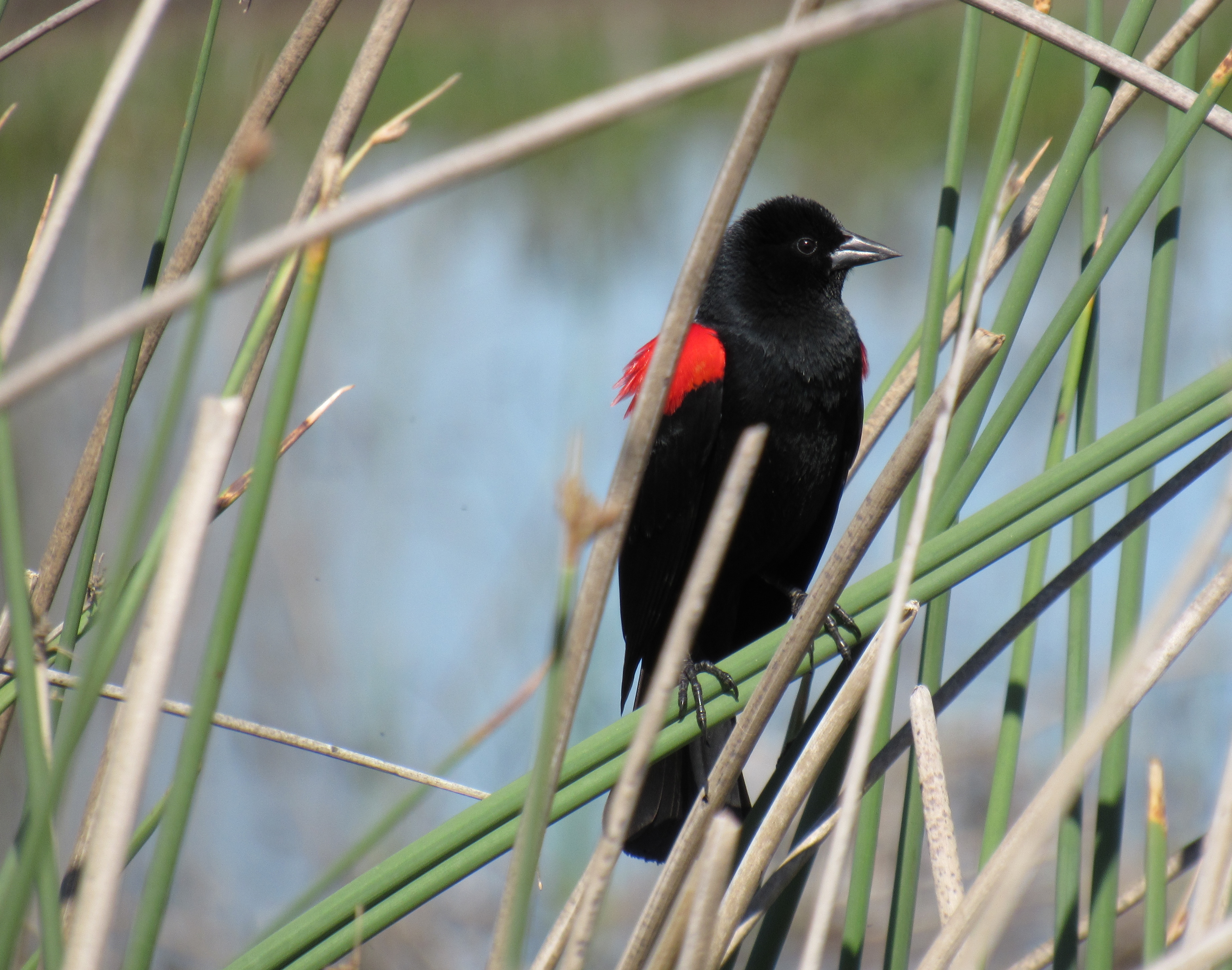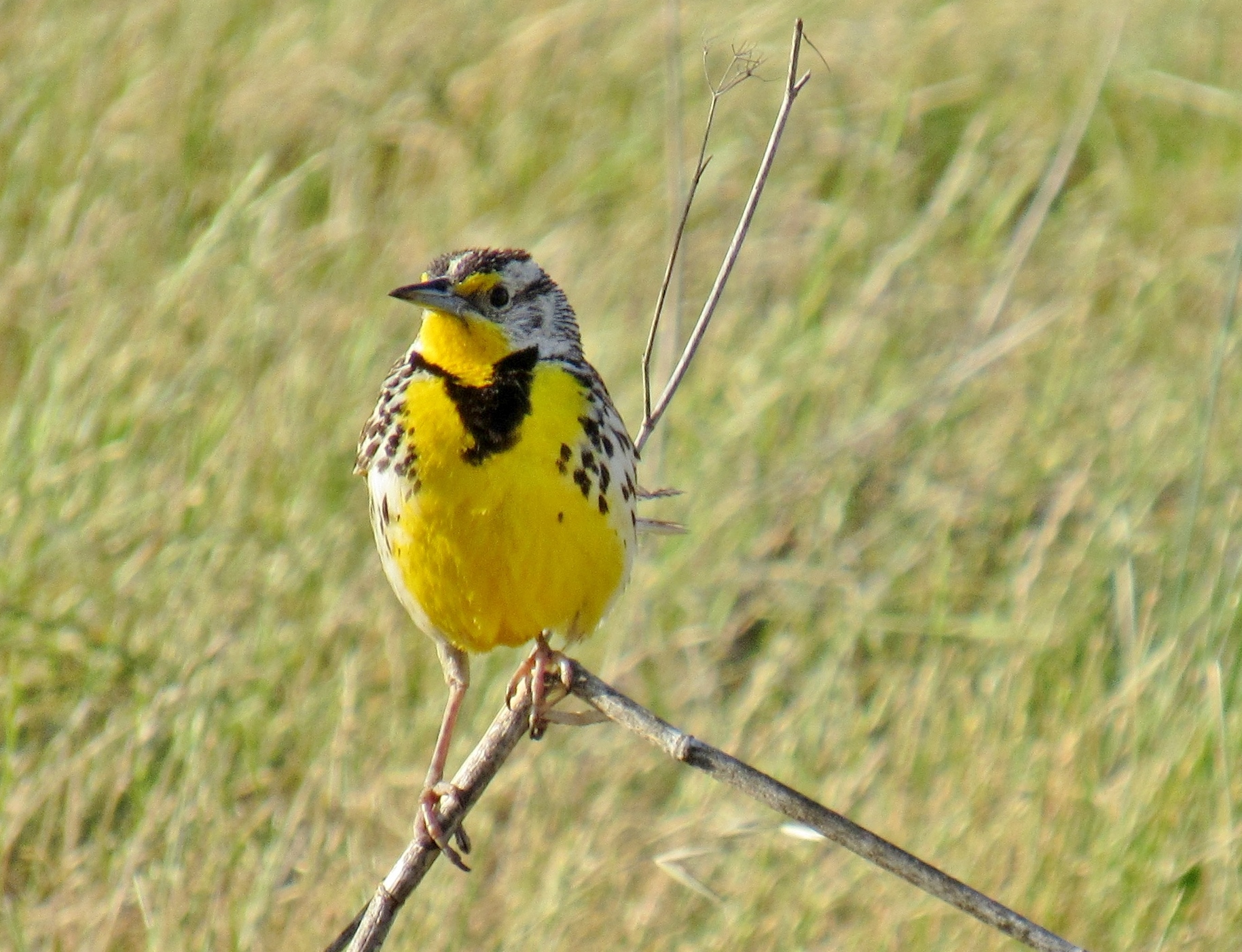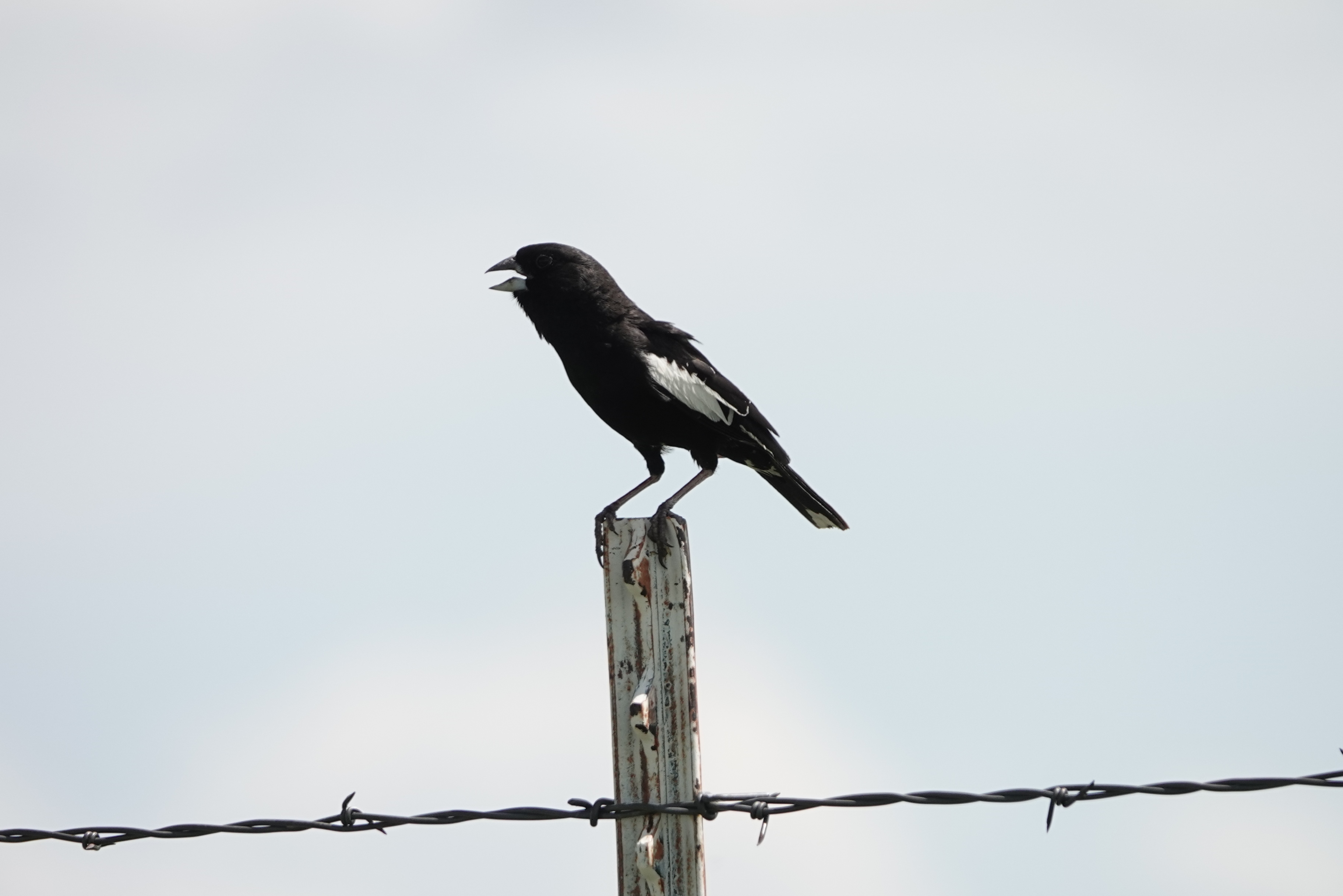The Difference Between Blackbirds and Black Birds: More Than Merely Grammar!
Not all blackbirds are black birds.
And not all black birds are blackbirds.
Confused yet? You're not alone.
Distinguishing a blackbird from a mere black-colored bird involves more than just grammatical pedanticism: it's a matter of taxonomy.
 |
| Red-winged Blackbird (California bi-colored subspecies) |
 |
| Tricolored Blackbird: Similar to Red-winged Blackbird in appearance, but endemic to California and entirely different in sound and breeding habits. |
When an ordinary casual observer of birds describes a bird as a "black bird," they're often referring to the bird's color: maybe the bird really is a blackbird, but it could just as likely be a starling or crow, which certainly are black in color, though unrelated to what ornithologists classify as true blackbirds.
 |
| Brewer's Blackbird. Because Brewer's Iridescent Purple-and-Green Bird doesn't have the same ring to it. |
When ornithologists and other bird nerds call a bird a "blackbird," we're speaking of the bird's taxonomy, and typically referring to one of several species within the blackbird family (Icteridae) such as Red-winged Blackbird or Brewer's Blackbird. But we could also be referring to a less-obvious member of the family, like a cowbird or grackle (though most people I know would just call them that). These are all members of the blackbird family - and, conveniently, they're also black.
 |
| Great-tailed Grackles, doing their weird grackle thing. In a group of typically quite vocal birds, grackles may very well be the noisiest! |
But, the blackbird family is not comprised exclusively of black-colored birds. The family, further subdivided into 30 genera, includes over 100 distinct species across the New World, many of which are not entirely black. 23 of these species are found in North America, and taxonomically speaking, these can all be called "blackbirds," whether or not they're predominately black in color.
 |
| Western Meadowlark. Yes, this is in fact a type of blackbird. |
Though many species of blackbirds are indeed black, nearly half of North America's members of the blackbird family are actually very bright in color, such as orioles and meadowlarks.
 |
| Baltimore Oriole: an orange-and-black bird that is also a blackbird. Note how similar this bird is in shape (especially bill shape) to the familiar Red-winged Blackbird, pictured at top. |
Common color schemes in the blackbird family include black with touches of red, orange or yellow. Many blackbirds are more than just plain black: look closely in the sunlight, and their plumage shines with a striking green and purple iridescence, caused by feather structure at a microscopic level rather than pigments.
 |
| Yellow-headed Blackbird's bold color scheme |
Blackbirds are typically a very vocal group of birds, and their songs and calls incorporate a wide variety of sounds that range from the grating noise of a rusty metal gate to liquid, fluty melodies. Some of the most iconic birdsongs across North America, like that of the Red-winged Blackbird and the meadowlarks, are produced by members of the blackbird family.
 |
| Bobolink, a true blackbird, in the open space it loves best. |
In the world of taxonomy, birds are classified into families based on shared traits and degree of similarity to closely related species. All birds are grouped within Kingdom Animalia (the animals), Phylum Chordata (the chordates, or animals with a backbone), and Class Aves (the animals we know as feathered, egg-laying birds). While birds of the world are further classified into around 40 distinct orders, the majority of the world's species (over 6,000) are classified as passerines, sometimes referred to as perching birds or (less accurately) songbirds; these are all members of Order Passeriformes, to which our humble blackbirds belong.
 |
| Common Raven: a truly black bird that is not a true blackbird, but rather a Corvid. |
 |
| European Starling: a black-colored bird that often hangs out with blackbirds, but is not really a true blackbird |
Widespread and abundant, European Starlings (pictured above) are probably the only species that really complicates things by behaving like and flocking together with proper blackbirds. Here on California's agricultural lands, grasslands and wetland edges, it's common to see large mixed flocks that may contain Red-winged, Tricolored and Brewer's Blackbirds, along with Brown-headed Cowbirds and European Starlings, maybe with a Yellow-headed Blackbird thrown in for good measure. All of these species are taxonomically classified as "blackbirds," except the unrelated starlings.
 |
| Male Lark Bunting: a black-colored bird that is called a bunting but is really a New World sparrow. |
On the Great Plains, male Lark Buntings may also cause some confusion, as they are found in prairie habitats alongside true blackbirds like meadowlarks, Bobolinks and Red-winged Blackbirds. All other black-colored species mentioned above should be sufficiently distinct to be recognized for what they are; and aside from crows and ravens, most have quite restricted ranges in North America.
 |
| Black Phoebe: the most distantly related species yet! |







This reminded me of the jackdaw thread from reddit a few years ago, but in a good way! :)
ReplyDelete